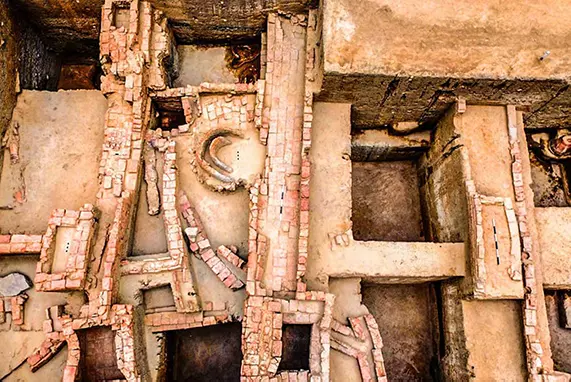
Keeladi report: Politics, proof, and buried history | Explainer
Even after two years, the Keeladi excavation report remains unpublished. Is it buried in red tape, academic dispute—or a larger political narrative?

The much-anticipated final report on the Keeladi excavations in Tamil Nadu continues to remain unpublished—two years after it was submitted.
Archaeologist Amarnath Ramakrishna’s report, which claims evidence of an ancient urban Tamil civilisation, is under review by the Archaeological Survey of India (ASI) and the Union Ministry of Culture. But why the delay? And what really went wrong?
Roots of Keeladi controversy
Keeladi, located 12 km southeast of Madurai, first drew attention in 2014 when Amarnath Ramakrishna initiated excavations as the Superintendent Archaeologist of ASI. The dig took place across a 100-acre former coconut grove along the Vaigai river.
Of the 100 sites identified, Keeladi yielded the most significant finds—over 7,500 artefacts including wall structures, drainage systems and wells. Carbon dating placed the findings at over 2,160 years old, suggesting the area was part of an ancient culture that spanned from 800 BCE to 1st century CE.
These findings offered rare material evidence to support Tamil Sangam literature, which had long described urban settlements, trade and culture but lacked archaeological backing until now.
Also read: Keeladi can be delayed but not erased from memory: Indologist Balakrishnan
Why the report was put on hold
Despite the historical value, ASI and the Ministry of Culture have pushed back the report citing several issues. The official stance is that it lacks scientific rigour. Here are four reasons they cited for withholding the publication of the report:
1. Disputed chronology: The ASI believes Keeladi should be dated post-300 BCE, while Amarnath dates it between 800 BCE and 500 BCE.
2. Documentation gaps: The report allegedly lacks essential technical details, including an accurate village map and updated plates and drawings.
3. Scientific testing: The ASI insists on using Accelerator Mass Spectrometry (AMS) dating to re-examine later cultural layers.
4. Sample analysis concerns: ASI reviewers note inadequate depth and layer data in excavation records, raising doubts about the findings’ accuracy.
Also read: What’s delaying Keeladi report? ASI spokesperson responds to allegations
Minister vs archaeologist: Conflicting claims
Union Culture Minister Gajendra Singh Shekhawat has stated that Keeladi’s findings are “not technically well supported or established yet”. Meanwhile, Amarnath Ramakrishna insists he has submitted all required evidence and urges the ministry to read the full report before passing judgment.
Amarnath defends the original chronology and warns that rewriting the report to suit new dates, as suggested by the ASI, would be a “crime against history.”
Who gets to tell Tamil history?
Beyond scientific debate, many see the Keeladi issue as deeply political. Is it being buried because it challenges prevailing historical narratives? Is it a victim of bureaucracy—or academic gatekeeping?
Keeladi is no longer just an archaeological site. It represents a cultural identity, a historical assertion, and perhaps, a contest over who controls the telling of Tamil Nadu’s ancient past.
(The content above has been transcribed from video using a fine-tuned AI model. To ensure accuracy, quality, and editorial integrity, we employ a Human-In-The-Loop (HITL) process. While AI assists in creating the initial draft, our experienced editorial team carefully reviews, edits, and refines the content before publication. At The Federal, we combine the efficiency of AI with the expertise of human editors to deliver reliable and insightful journalism.)

